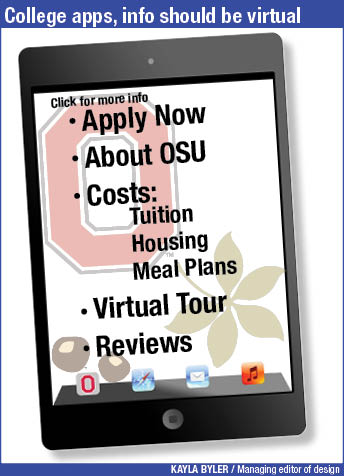 Ah, the days of college applications, when no one knew where they were going to end up, just that they would likely end up somewhere. For many, it was the first time anyone heard real numbers as to how much college cost. We have a general idea of expense, but no numbers until that first college we fall in love with gives us their tuition costs and makes our eyes pop out of our heads.
Ah, the days of college applications, when no one knew where they were going to end up, just that they would likely end up somewhere. For many, it was the first time anyone heard real numbers as to how much college cost. We have a general idea of expense, but no numbers until that first college we fall in love with gives us their tuition costs and makes our eyes pop out of our heads.
On Feb. 20, Jon Boeckenstedt, associate vice president for enrollment management and marketing at DePaul University in Chicago, published an editorial in The Washington Post, with an idea that could change the whole situation.
Boeckenstedt proposed a new way to find your ideal college: instead of relying on old fashioned letters, college visits and word of mouth, what if colleges had Yelp reviews, stats on Google about how much college on average cost (not just a sticker price, but a better estimate of how much you would pay at any one college) and social media just played a larger role in the college admissions process in general?
Yet while a lot of this information is important, it’s already available online. It’s just not clear, nor is it that quick to find. Putting this information into a single database run by a tech giant would help make searching for that perfect college far easier.
Ohio State has posted under Undergraduate Admissions in a page titled “Quick Facts” that the average aid package given to incoming freshmen is $13,070, but not specifying if that was for in- or out-of-state students. The percent of different ethnicities of studentsis posted on that same page as is the percent of males to females.
A lot of that information would help a potential OSU student figure out how they might succeed here. But it’s not enough.
We need to know a real financial aid number. The $13,070 financial aid package might be skewed by the amount of domestic out-of-state students (21.2 percent) and the amount of students who get a full ride (not specified). More specific averages such as the average in-state financial aid package, the percent of students with full scholarships from in- and out-of-state, and the percent of students on campus with Office of Diversity and Inclusion scholarships would help parents estimate better. Some of these numbers can be found online, but only through careful searching.
Sometimes people don’t realize they will do well at a different school other than the one they chose. For example, first semester I met a girl from out of state. By the end of that semester, she’d decided to move back to her home state, not because of her grades or because of money or because she didn’t have friends, but because she missed her family. That’s something she might have been able to realize had she gotten more reviews of OSU from out-of-state students.
Another problem with the current system is that people need to travel to campus to get a feel for it. Changing the system to a virtual tour, with testimonials from real OSU students, would help a lot of students from out of state make better decisions about college, and be able to do it more effectively and with less expense.
A good feel for OSU might be easier to get through a coherent database full of financial aid numbers, virtual tours and testimonials. However, to really attract the best students for their school, OSU needs to acknowledge the other things they might not otherwise want to stress: the huge amount of students, the number of sororities and fraternities, the amount of drinking that goes on here and the crowds that descend on OSU for gamedays. The best way to do it? Let students write their own reviews. We love this school, but we know the highlights and the lowlights. To attract more students, the best thing the university can do for itself is let us advertise for them. It would be real, it would be positive and it would be the best way to attract students who will enjoy OSU.


